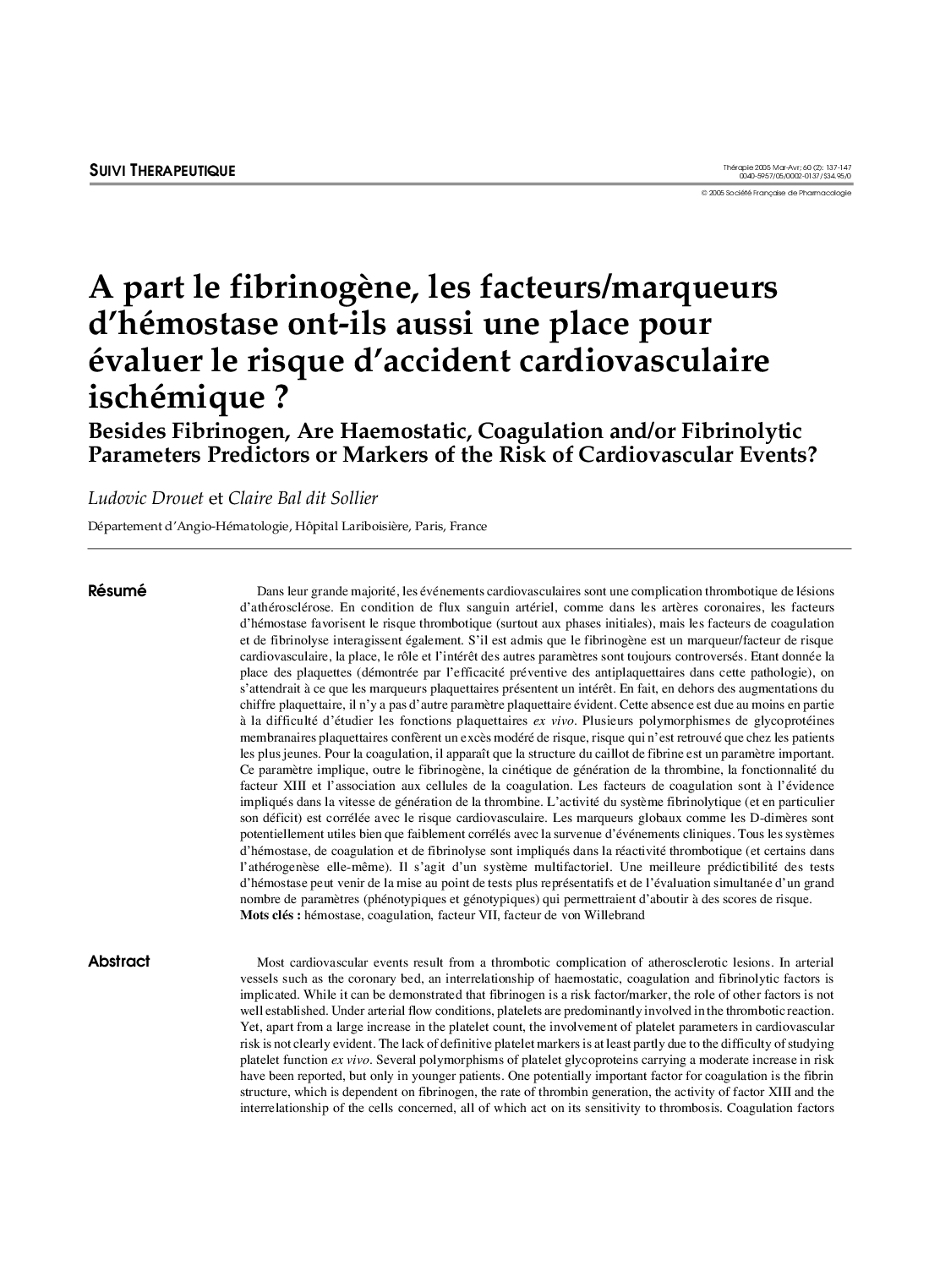| کد مقاله | کد نشریه | سال انتشار | مقاله انگلیسی | نسخه تمام متن |
|---|---|---|---|---|
| 9027548 | 1130073 | 2005 | 11 صفحه PDF | دانلود رایگان |
عنوان انگلیسی مقاله ISI
A part le fibrinogène, les facteurs/marqueurs d'hémostase ont-ils aussi une place pour évaluer le risque d'accident cardiovasculaire ischémique ?
دانلود مقاله + سفارش ترجمه
دانلود مقاله ISI انگلیسی
رایگان برای ایرانیان
کلمات کلیدی
موضوعات مرتبط
علوم پزشکی و سلامت
داروسازی، سم شناسی و علوم دارویی
فارماکولوژی، سم شناسی و اقلام دارویی (عمومی)
پیش نمایش صفحه اول مقاله

چکیده انگلیسی
Most cardiovascular events result from a thrombotic complication of atherosclerotic lesions. In arterial vessels such as the coronary bed, an interrelationship of haemostatic, coagulation and fibrinolytic factors is implicated. While it can be demonstrated that fibrinogen is a risk factor/marker, the role of other factors is not well established. Under arterial flow conditions, platelets are predominantly involved in the thrombotic reaction. Yet, apart from a large increase in the platelet count, the involvement of platelet parameters in cardiovascular risk is not clearly evident. The lack of definitive platelet markers is at least partly due to the difficulty of studying platelet function ex vivo. Several polymorphisms of platelet glycoproteins carrying a moderate increase in risk have been reported, but only in younger patients. One potentially important factor for coagulation is the fibrin structure, which is dependent on fibrinogen, the rate of thrombin generation, the activity of factor XIII and the interrelationship of the cells concerned, all of which act on its sensitivity to thrombosis. Coagulation factors largely affect the rate of thrombin generation. The activity of the fibrinolytic system (and principally any deficiency) has a role in the cardiovascular risk. General markers of cardiovascular risk such as D-dimers are potentially useful, but they increase with thrombin generation and are decreased by a deficiency in fibrinolysis. Furthermore, possibly because they are not indicative of the fibrin structure, they are poorly correlated with clinical events. The poor significance of the available haemostatic, coagulation and/or fibrinolytic parameters is probably due to their lack of representativeness, since haemostatic, coagulation and fibrinolytic systems are all involved in the thrombotic response (and some in atherogenesis itself). Atherogenesis is a multifactorial process and numerous moderate risk factors act in association. Better predictability of the haemostatic tests would probably result from both the design of more representative tests and the evaluation of multiple parameters, and would lead to the definition of a risk score. Technological advances will make this possible.
ناشر
Database: Elsevier - ScienceDirect (ساینس دایرکت)
Journal: Thérapie - Volume 60, Issue 2, MarchâApril 2005, Pages 137-147
Journal: Thérapie - Volume 60, Issue 2, MarchâApril 2005, Pages 137-147
نویسندگان
Ludovic Drouet, Claire Bal dit Sollier,